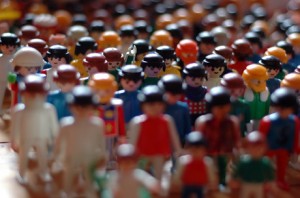Gamification Takes Off
In the near future, consumer loyalty programs could look more like FarmVille, Mafia Wars, and Foursquare than the “earn and burn” formats we know today.
 Originally posted by WILLIAM NG – INCENTIVE
Originally posted by WILLIAM NG – INCENTIVE
FarmVille, the Facebook social game, engages over 10 million people daily, who spend hours harvesting virtual crops and collecting “farm coins,” “farm cash,” and “experience points.” Players track their friends’ progress on Facebook and also help each other in accomplishing specialized tasks for virtual rewards, dubbed “coopetitions.” Each month on Foursquare, two million players gain virtual points and achievement badges by checking into places.
The fanatical devotion to social network games has not gone unnoticed by loyalty marketers. Retailers and brands are now ramping up the social capabilities of their websites, giving away virtual points and merit badges and using other “game mechanics” such as leaderboards, ranks, and avatars to engage customers. In one example, Intuit, the maker of TurboTax software, has established virtual points leaderboards in its online community to recognize message board members who give out useful tax advice the most.
But in more and more cases, virtual achievements are being linked to real-life rewards. Warner Brothers “gamified” its website and now awards redeemable credits to those who play its online games, comment on videos, and complete surveys; the credits can be used to acquire wallpapers, ringtones, DVDs, and Blu-rays. Fashion brand Jimmy Choo recently deployed a Foursquare scavenger hunt in London in which users got free shoes if they checked into a place where its new sneaker collection was present.
Loyal Gamesters
Kris Duggan, CEO of Menlo Park, CA-based Badgeville, whose software lets website owners award badges to loyal visitors, echoes Kirk’s sentiment. “Traditional loyalty programs are not inherently social,” he says, “but once you make them social, and status can be broadcast, people are willing to work very hard to build that status” through loyalty tasks. (You can read our interview with Duggan here.)
Kirk says loyalty programs fundamentally haven’t evolved much from their points earning and burning cycles. That predictability and lack of emotional connection have put consumers on autopilot. Loyalty managers, he says, can stimulate participants with simple gamification elements like awarding badges for doing program-related activities and letting them display the patches in their profiles on the program website. They also can create status tiers to rank the participants.
Kirk cautions that before slapping badges on everything, make sure your “game story” is well thought out. The Maritz executive notes, “If there’s nothing more sophisticated behind the badges, [retention] is not going to last. It’s going through the exercise of saying, ‘If this were a game, would it be interactive, playful, and engaging?’ All good games are special experiences, and how to apply gamification is just getting started.”







